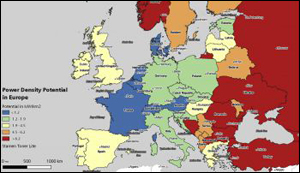Europe has the untapped onshore capacity to meet global energy demand
14. 8. 2019 | University of Sussex | www.sussex.ac.uk
Europe has the capacity to produce more than 100 times the amount of energy it currently produces through onshore windfarms, new analysis from the University of Sussex and Aarhus University has revealed.
Co-author Benjamin Sovacool, Professor of Energy Policy at the University of Sussex, said: “The study is not a blueprint for development but a guide for policymakers indicating the potential of how much more can be done and where the prime opportunities exist. Our study suggests that the horizon is bright for the onshore wind sector and that European aspirations for a 100% renewable energy grid are within our collective grasp technologically.“

The study reveals that if all of Europe’s capacity for onshore wind farms was realised, the installed nameplate capacity would 52.5 TW - equivalent to 1 MW for every 16 European citizens. The study estimates that more than 11 million additional wind turbines could be theoretically installed over almost 5 million square kilometres of suitable terrain generating 497 EJ of power which would adequately meet the expected global energy demand in 2050 of 430 EJ.
Read more at University of Sussex
Image Credit: University of Sussex
-jk-




